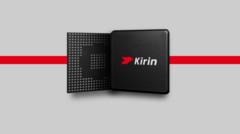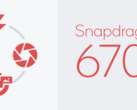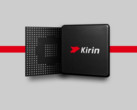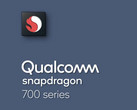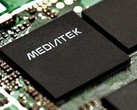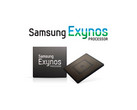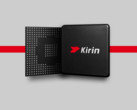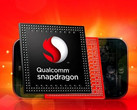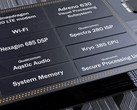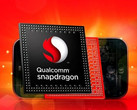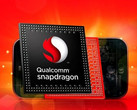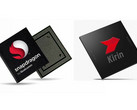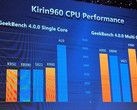Snapdragon 625 or Kirin 659? That's a question we're certain Android enthusiasts have asked themselves a lot over the past few months. The Snapdragon 625 is, for lack of a better term, legendary. The mid-range SoC, released in Q1 2016, has seen, perhaps, the most use of any Snapdragon processor ever. A combination of adequate performance and unmatched efficiency makes it the ideal mid-range SoC, and one that we believed to have contributed in no small part to Qualcomm's dominance over the past two years.
Enter the Kirin 659. HiSilicon's SoC, released about a year after the 625, is a tad late to the game, especially considering the fact that it didn't see much real-life usage until the tail end of 2017, when Huawei released a flurry of devices powered by the processor.
How do they compare?
Both SoCs are octa-core processors exclusively with ARM Cortex-A53 cores. No ARM Cortex-A73 cores on either of them. They handle things a bit differently, though. While the Snapdragon 625 uses eight cores all clocked at 2.0 GHz, the Kirin 659 has four powerful, performance cores clocked at 2.36 GHz, and four power-saving cores clocked at 1.7 GHz.
What this means is that when a device running on a Kirin 659 needs power, it has more to draw from, as there are four cores clocked at a higher frequency than those of the Snapdragon 625's.
Multi-core performance is a more level playing field. The 625's weakest cores are also clocked at 2.0 GHz, while the Kirin 659's opt for a lower 1.7 GHz clock speed.
Benchmarks
Benchmark scores aren't definite and considering the variance between scores on our database for devices powered by both SoCs, we decided to even the playing field as much as possible by using only Huawei devices. Geekbench 4.1 was used.
According to our scores, the Huawei Nova Plus, powered by the Snapdragon 625, and with 3 GB of RAM, averaged a value of 880 in single core tests, and one of 3148 in multi-core-core.
A similar device to it, the Honor 7X, running on the same software and also with 3 GB of RAM, but powered by the Kirin 659, managed a value of 869 in single-core tests, and one of 3342 in multi-core tests.
Disappointing. And quite contrary to expectations.
On the whole, though, single core values on Kirin 659 devices show a slim 8-10% advantage over the Snapdragon 625, which is closer to what one would expect. Multi-core tests, on the other hand, show the Snapdragon 625 having a sizeable 20-22% advantage over its rival.
On Geekbench 4.0, however, the Kirin 659 keeps its 7% advantage over the Snapdragon 625 in single core, and also boasts of a 16% hold over it in multi-core.
Our benchmark scores are polarising enough that it's safe to say both SoCs will give you just about the same amount of power.
GPU
Computing performance may be close but graphical prowess is all for the Snapdragon 625. The Mali-T830 MP2 on the Kirin 659 is capable, but it gets outdone by the Adreno 506 on the Snapdragon 625. On 3DMark's Sling Shot Unlimited Physics 2560x1440 test, for example, the Adreno 506 has a tidy 11% advantage over the Mali-T830 MP2.
The difference is graphical processing power isn't anywhere as significant as one would expect, in any case, and both SoCs will offer similar performance in the graphics department. The Snapdragon 625 has a lead here, though, and that's undeniable.
Efficiency
In terms of efficiency, both devices are also similar. The Snapdragon 625 is produced by Samsung's 14nm manufacturing process, while the Kirin 659 is based on TSMC's 16nm process. Do note that TSMC has no 14nm process; it's a jump from 16nm to 12nm. That said, you'll get similar levels of power efficiency from both devices, with variance mostly a product of software more than hardware.
Conclusions and recommendations
The Snapdragon 625 and Kirin 659 are as close as it gets. While we didn't consider ISPs and connectivity features, we're inclined to say you won't be losing out on much by choosing any of them instead of the other. Computational and graphical performance values are close enough that the experience on both will be nigh-identical. Software would be a much bigger factor.
That said, Snapdragon SoCs have a lot more community software support than their Kirin rivals. This means like things like mods, ROMs, and other tweaks will be available to the average Snapdragon 625 device way before it gets to a Kirin 659-powered one. With that in mind, we believe the Snapdragon 625 is a better option. The SoC is just about on its way out, though, as most OEMs are likely to move on to the Snapdragon 630 this year. It's a shame the Kirin 659 arrived so late to the stage, as it could have given the 625 a good run for its money.
| Geekbench 4.0 | |
| 64 Bit Single-Core Score | |
| Huawei Mate 10 Lite | |
| Huawei Nova 2 | |
| Huawei Nova Plus | |
| Huawei Nova | |
| Asus Zenfone 3 ZE552KL | |
| Lenovo P2 | |
| Lenovo Moto Z Play | |
| 64 Bit Multi-Core Score | |
| Asus Zenfone 3 ZE552KL | |
| Huawei Mate 10 Lite | |
| Huawei Nova 2 | |
| Huawei Nova Plus | |
| Huawei Nova | |
| Lenovo P2 | |
| Lenovo Moto Z Play | |
| Geekbench 4.4 | |
| 64 Bit Single-Core Score | |
| Huawei Nova 2 | |
| Huawei Mate 10 Lite | |
| Huawei Nova Plus | |
| Xiaomi Mi Max 2 | |
| Huawei Honor 7X | |
| Lenovo Moto G5 Plus | |
| Motorola Moto G5s Plus | |
| 64 Bit Multi-Core Score | |
| Lenovo Moto G5 Plus | |
| Motorola Moto G5s Plus | |
| Xiaomi Mi Max 2 | |
| Huawei Mate 10 Lite | |
| Huawei Nova 2 | |
| Huawei Honor 7X | |
| Huawei Nova Plus | |
| 3DMark | |
| 2560x1440 Sling Shot Extreme (ES 3.1) Unlimited Physics | |
| Asus Zenfone 3 ZE552KL | |
| Lenovo Moto G5 Plus | |
| Xiaomi Mi Max 2 | |
| Motorola Moto G5s Plus | |
| Huawei Nova | |
| Huawei Nova Plus | |
| Huawei Mate 10 Lite | |
| Lenovo P2 | |
| Huawei Nova 2 | |
| Huawei Honor 7X | |
| Lenovo Moto Z Play | |
| 2560x1440 Sling Shot Extreme (ES 3.1) Unlimited Graphics | |
| Asus Zenfone 3 ZE552KL | |
| Huawei Nova Plus | |
| Lenovo Moto Z Play | |
| Huawei Nova | |
| Lenovo P2 | |
| Lenovo Moto G5 Plus | |
| Xiaomi Mi Max 2 | |
| Motorola Moto G5s Plus | |
| Huawei Mate 10 Lite | |
| Huawei Nova 2 | |
| Huawei Honor 7X | |


